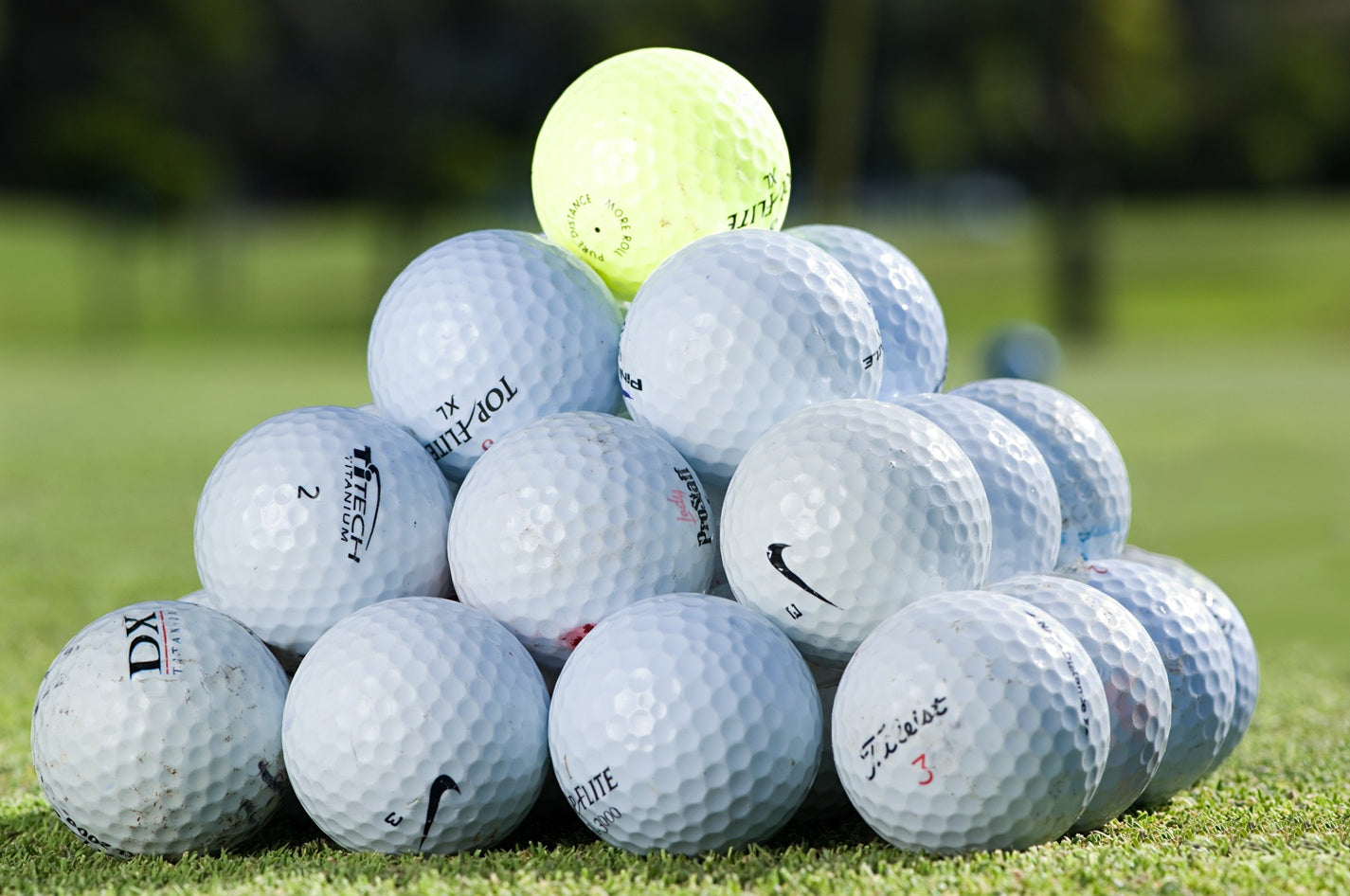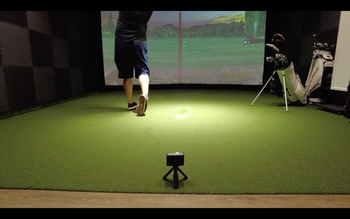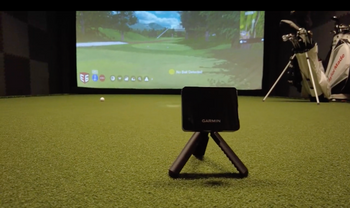To figure out which club hits what distance, you'll need to spend time at the range hitting several shots with each stick while tracking carry distances with a rangefinder or GPS unit. Put together your own yardage guide by writing down the typical distance for each club, then modify for the weather.
You'll drop about 2 yards every time it gets 10°F colder, but gain around 2% extra carry for each 1,000 feet you climb in elevation. Stick around to reveal additional tricks for dialing in your club choices.
Table of Contents
Getting to Know Your Unique Swing Style
You can't pick the best clubs for your game until you figure out what makes your swing tick. Your clubhead speed controls your distance potential, though hitting it solid beats swinging hard every time. Tour guys typically take it back about 60 inches, but your perfect backswing length comes down to your rhythm and balance.
Here's what matters – how you swing down at the ball, plus your impact accuracy on the face, decides where that shot ends up. The best players keep their speed and body angles super consistent from shot to shot.
Watch your grip pressure too! It totally affects how you control the club and your distance reliability, which is huge for knowing your true yardages. Where you strike the face makes or breaks both how far it goes and whether it stays on target. Recording your swing on video reveals the personal quirks that shape your ball flight and comprehensive results.

Testing Your Clubs at the Driving Range
Nailing down real distances at the range turns your game from hoping into knowing. You'll definitely want a rangefinder or GPS gadget for actual numbers – these devices beat guessing every time. Try this: whack several balls with each club, then find the average for dependable info. Your 7-iron could go 145 one time and 152 the next, so smacking five gives you that solid 148-yard number.
Make sure to pace off some shots now and then – it trains your eye for distance! Remember the temperature matters big time, because that freezing February practice won't match what you hit in July. Really focus on those wedge shots inside 115 yards because those approach shots make or break your score. Write down what each club does, and you'll build a custom distance guide that changes how you manage the course. Just know that range distances might not match the course exactly, so checking your numbers during actual rounds gives you the truest readings for tournament play.
Building Your Own Distance Guide
Turn those range notes into a score-dropping weapon by making your own distance guide. Get started by setting up a basic chart or spreadsheet showing each club across the top and different swings down the side, full rip, three-quarter, half, and chip shots.
Listen up: you need those standard-condition benchmarks initially. Say your 7-iron flies 140 with a full cut, jot that down! Then fill in your shorter swing, maybe 120 for three-quarters and 100 for half.
Remember to include what makes you different. Your swing speed changes everything, so be real about it. Know how pure you hit it, and your technique seriously affects your real-world numbers. Try working on cuts and draws while you practice to give yourself more distance options. Keep this guide fresh as you get better; it's your personal cheat sheet for lower scores.
Dealing with Weather and Course Variables
That distance guide sets you up nicely, but you've gotta tweak those numbers depending on what nature's serving up during your round. Cold weather's a distance killer; figure on dropping two yards every time it dips ten degrees below 70°F. Good news, though: playing up high helps you out, giving you about 2% extra energy for every 1,000 feet you climb. Wind's the wild card here. That 10-mph breeze in your face robs 10-15 yards, but flip it around and you're getting free distance! Sticky humidity counts, too; that thick air creates drag that steals some yards when it's swampy out. Those pristine fairways at your course actually enhance the air quality while you're doing this math. Modern watering systems keep conditions steady, which makes your distance guesses more reliable. Sharp players think about these factors before pulling out of any club.

Getting Precise Numbers with Launch Monitors
Personal yardage guides work great, but launch monitors bring serious accuracy to your club choices with pure facts. These nifty gadgets track everything with radar how fast the ball leaves, what angle it launches, its spin, and exact carry distance. Check this out: you're seeing instant info that takes all the guessing away.
Launch monitors show your smash factor, basically how well you're moving power from club to ball. Solid driver contact gets you 1.48-1.50. They'll expose your shifting loft and how you're hitting down or up, explaining why that 7-iron goes 145 when you thought it'd be 150. This info helps you secure exact distances for every stick!
Today's launch monitors capture more than 40 different measurements for complete swing breakdown, revealing way more than just how far you hit it. Those repeatable ball flights you'll develop from monitor practice will seriously enhance your course strategy and scores.
Making Changes for Different Course Setups
After you've got those monitor numbers locked in, actual golf throws you surprises that can wreck your perfect 150-yard 7-iron. Playing surfaces keep changing your shot distances, so you've gotta modify on the fly.
Wind messes with you most that 15 mph gust in your face takes away 10-15 yards, but catch it behind you and boom, 8-12 bonus yards. Cold air matters big time; expect to lose about a yard for every 10 degrees it drops.
Hills change the whole game. Hitting uphill means grabbing an extra club for every 15 feet you're climbing, but going downhill lets you club down. Rock-hard fairways gift you 10-20 yards of bounce, while soggy turf stops it dead.
Listen up: you've gotta mentally recalculate your clubs for these situations before you swing!
Matching Clubs to Your Playing Ability
After sorting out weather stuff, your actual skill totally determines which sticks belong in your bag and realistic hitting distances. Real talk, newbies usually hit it 20-30% shorter than seasoned players swinging the same speed. Starting out? You'll love game-improvement irons with huge sweet spots that save your bacon on mishits. Mid-level players need to worry about solid contact more than bombing it, and scratch golfers can mess with players' irons and strong-lofted drivers for peak precision. How long you've played also decides your shaft needs rookies do best with regular flex, but bombers need stiff or X-stiff shafts. Getting fitted matters more as you improve, increasing what you can do!
Experimenting with Different Club Angles and Builds
Finding your perfect clubs comes from methodically trying different angles and building seriously; this can totally alter your results. You'll need to experiment with different face angles to reveal their effect on flight path and length. Say you compare a 9-degree big stick against a 10.5, you'll learn which one boosts your distance.
Get this: things like face angle, shaft angle, and how flexible the shaft is all team up to change your shots. While testing, notice how different materials and shapes influence what happens. Your shaft angle matters immensely with wedges and short irons; get it wrong and you're spraying balls everywhere.
Grab a launch monitor or test on the course to collect hard facts about how each stick performs with your particular move.

Creating Reliable Swing Habits
Master swing repeatability and watch your scores plummet, no matter what sticks you're swinging. Your hips and chest turn together like clockwork when your middle stays strong; you'll keep that vital balance through each swing. Check it out: Tour players crush it over 165 mph because they've burned in repeatable motions through endless reps.
Start by nailing your pace and flow. Your hip turn creates the juice, but keeping the club on path gives you accuracy. Most weekend warriors already have decent patterns that just need tweaking instead of starting over. Hit specific drills often, and grab some tech to pinpoint exactly what needs work. Don't forget, quicker body rotation usually means more reliable, stronger swings!
Monitoring and Updating Your Distance Info Through Time
After locking down those swing basics, you need to create your own distance log, and trust me, this takes more than one round! You'll want steady info from several rounds to get trustworthy club numbers. Keep it simple, using a notepad, writing down real distances for every stick while you play. Grab GPS tools or apps like Arccos for automatic, exact measurements. Key point: Clean data needs editing. Toss those weird shots where you clipped a branch or totally chunked it. Get your averages from 10-15 good strikes per club for useful info. Watch those conditions, your 7-iron could sail 150 on quiet days but just 140 against the breeze. Check your numbers each month, tweaking your yardage sheet when trends show up.
Frequently Asked Questions
How Do I Pick the Best Ball for Optimal Length?
For top distance, start by matching your ball to how fast you swing. Got a slower tempo? Grab soft ones like the Callaway Supersoft. Big hitters need firmer balls like the VICE Pro Plus. Listen to this—don't skip over spin numbers! Seven of the longest balls actually spin more than average. Try different compressions and center types to see what launches perfectly for your swing.
What's the Deal with Carry Distance Versus Total Distance?
Carry distance covers how far your shot travels before touching down, and total distance adds the bounce and roll after landing. You'll care about carry when flying over ponds or sand—just the air time counts. Total distance is key off the tee when you want every inch, mixing flight plus rollout. Knowing both lets you grab the perfect stick for any shot!
Do I Need Different Sticks for Uphill and Downhill Shots?
You bet you need different clubs for slopes! When hitting uphill, the hill naturally increases your loft, so you'll come up short—grab one club less than usual. Downhill's totally different: the slope takes away loft, making balls fly flatter and farther. Pick a higher-lofted club to get the right flight path and manage your distance.
When Should I Update My Distance Guide?
You ought to refresh your yardage sheet every season minimum, but listen—some things mean updating immediately. New sticks or gear swaps? Check those distances ASAP! Been working with an instructor or feeling different ball flight? Time to remeasure. Temperature swings and playing conditions mess with your distances too.
Does How Hard I Hold the Club Change My Distance?
Absolutely, your grip tightness totally changes your distance per club! Death-gripping kills your wrist action and costs you speed. Too loose, and you've got zero consistency or control. Key point - that perfect pressure (imagine cradling an egg without breaking it) opens up both length and precision. Keeping steady pressure with every club gives you reliable distances.
Conclusion
You've now got everything to lock down your precise club distances! Begin logging your shots at the range, create that yardage sheet, and factor in breeze and hills. Your 7-iron flies 150 today, but that'll change as your swing gets better. Keep tracking, keep tweaking, and you'll nail the right stick selection every time.





